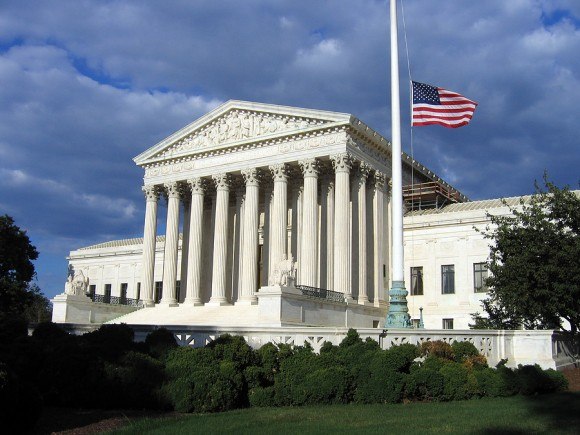With the January 7, 2022, oral argument over the Occupational Safety and Health Administration (OSHA) Vaccine or Test Emergency Temporary Standard (ETS) in the U.S. Supreme Court fast-approaching, many amici curiae (friends-of-the-court) briefs supporting the challengers to the ETS and the government have been filed by businesses and business associations, non-profit legal and constitutional organizations, employee advocacy groups, religious freedom organizations, physicians’ societies and organizations, and U.S. Congresspersons.
The government’s 87-page response in opposition to the stay of the ETS focuses mainly on OSHA’s authority under the Occupational Safety and Health Act (OSH Act) to issue the ETS and downplays the validity of other constitutional and separation-of-powers arguments.
Forty-seven U.S. Senators and 136 Members of the U.S. House of Representatives assert they needed to file an amicus brief because of their concern with the executive overreach seen in the current administration’s response to the COVID-19 pandemic. They argue that vaccine mandates are “a prototypical state police power” and “not within the purview of the OSH Act, let alone something on which Congress intended OSHA to take unilateral action under its ’emergency’ powers.” They further argue that OSHA’s assertion of authority over COVID-19 violates the non-delegation doctrine because “Congress provided no authority—let alone an intelligible principle—for OSHA to become a roving public health agency.”
Meanwhile, the National Federal of Independent Business and other ETS challengers note that the Centers for Disease Control and Prevention (CDC) had issued a COVID-19 alert on isolation and quarantine that inherently conflicts with underpinnings of the ETS. Essentially, the CDC advised the public that anyone who tests positive for COVID-19 may return to work after five days, even without testing before their return if their “symptoms are resolving.” The challengers argue that “the ETS, by contrast, would force unvaccinated workers to test every seven days regardless of COVID-19 exposure or symptoms.” The CDC also recommended that individuals who test positive for COVID-19 use a mask only for five days if they are asymptomatic and that anyone infected with the Omicron variant, regardless of vaccination status, can spread the virus to others, even if they are asymptomatic.
As the state challengers in the case point out in their reply brief, they need immediate relief because many of them operate OSHA State Plans and are required to announce their intentions to adopt the OSHA ETS by January 7 — the same day as the Court hears oral argument. OSHA is also requiring the State Plans to adopt the ETS by January 24. They similarly argue a stay of the OSHA ETS is necessary to prevent irreparable harm, that is, to prevent the nullification of their own state laws that conflict with the ETS. They cite to an Arizona executive order, statutes in Florida, Montana, Tennessee, and West Virginia, as well as a state law in Indiana (an OSHA State Plan state) requiring the state wait 60 days to adopt a federal ETS.
The state challengers further argue that OSHA’s vaccine mandate does not meet the definition of the type of hazard for which OSHA has authority to regulate by the extraordinary measure of an emergency temporary standard. They assert that there is no “grave” danger that justifies OSHA acting now, two years into the pandemic, when vaccines have been available for over a year and widespread testing available for nearly that long. They argue that the danger of contracting COVID-19 is not uniquely an occupational hazard as it arises from human interaction, which can occur anywhere and thus is not work-related. Moreover, where it may be considered a work-related hazard, such as in healthcare, OSHA has withdrawn its healthcare ETS, leaving doubt as to whether there really is a grave danger.
The states also argue the ETS is inherently flawed, because it says that vaccinated employees are not a grave danger when they can become infected and transmit COVID-19 to others, ignoring different vulnerabilities based on age. OSHA’s cited research justifying the ETS suggesting that vaccinated and unvaccinated workers are unlikely to be admitted to an intensive care unit or die because of COVID-19, even if they contract it. Quoting from Sixth Circuit Judge Joan Larsen’s dissenting opinion from the order dissolving the stay, the states argue that “‘an unvaccinated 18-year-old bears the same risk as a vaccinated 50-year-old. And yet,’ according to OSHA, ‘the 18-year-old is in grave danger, while the 50-year-old is not.‘”
The Court granted the states’ earlier request for a divided argument, as their interests are different from other private parties challenging the ETS.
Original Article: Flurry of Briefs Filed Supporting, Opposing OSHA COVID-19 ETS in U.S. Supreme Court
©2022 Jackson Lewis P.C. Reprinted with permission. This material is provided for informational purposes only. It is not intended to constitute legal advice nor does it create a client-lawyer relationship between Jackson Lewis and any recipient. Recipients should consult with counsel before taking any actions based on the information contained within this material. This material may be considered attorney advertising in some jurisdictions. Prior results do not guarantee a similar outcome.
Focused on labor and employment law since 1958, Jackson Lewis P.C.’s 950+ attorneys located in major cities nationwide consistently identify and respond to new ways workplace law intersects business. We help employers develop proactive strategies, strong policies and business-oriented solutions to cultivate high-functioning workforces that are engaged, stable and diverse, and share our clients’ goals to emphasize inclusivity and respect for the contribution of every employee. For more information, visit https://www.jacksonlewis.com.





















 The Future of Knowledge in Insurance: From Training to AI-Powered Productivity
The Future of Knowledge in Insurance: From Training to AI-Powered Productivity  A Practical Blueprint: The Five Plays of an Innovation Culture
A Practical Blueprint: The Five Plays of an Innovation Culture  The Hardest Part of Innovation in Insurance Isn’t Technology; It’s Culture
The Hardest Part of Innovation in Insurance Isn’t Technology; It’s Culture  Why Insurance Telematics Integrations Fail
Why Insurance Telematics Integrations Fail 




